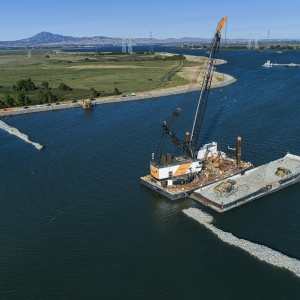The Stream, September 9, 2021: 90% of India Experiencing Drought
YOUR GLOBAL RUNDOWN
- Nearly all of India is experiencing dry conditions amid the summer crop season.
- An inability to retain groundwater and increased demand for the resource is putting the small island country of Malta at risk for losing their freshwater supply.
- Roughly 20 percent of pumping stations in New Orleans are still offline after Hurricane Ida.
- Europe will likely experience longer and more frequent droughts through the end of the century, new research suggests.
Residents in Louisiana’s Plaquemines Parish still don’t have running water, more than a week after Hurricane Ida hit the state.
“There’s just pieces of infrastructure that need to be here that are not here.” – Richie Blink, a member of the Plaquemines Parish Council. More than a week after Hurricane Ida made landfall in Louisiana, residents in lower Plaquemines Parish returned to their homes, many of which had no electricity and no access to safe drinking water. Nola.com reports that breaks in water pipes are responsible for the extended period without drinking water, according to officials. Although officials say the recovery efforts are moving faster than when Hurricane Isaac hit in 2012, residents say the government’s response has still been slow. While officials work to reestablish water connection for the parish’s some 7000 residents, officials are telling homeowners to come back only to check on their property and assess damage – not stay.
- Why it matters: Last week, Circle of Blue reported that over two hundred water systems, large and small, were experiencing outages after Hurricane Ida. In New Orleans, the Sewerage and Water Board asked residents to conserve water to prevent sewage backups. In smaller towns like those in Plaquemines Parish, the problem is no water at all.
The Small Island Country of Malta Is Running Out of Freshwater
In Malta, a small island country in the Mediterranean, climate change – along with an inability to retain groundwater and increased demand for water – is putting the country’s water supply at risk. Malta’s main source of drinking water comes from desalination. Hydrologist Marco Cremona told The Shift that relying on the energy-intensive process will only turn “the water problem into an energy problem.” Instead, Cremona said, Malta should be focusing on preserving their freshwater resources, like groundwater.
- Why it matters: Desalination is commonly seen as a steady, though energy-hungry and costly, means of satisfying freshwater demands in dry countries. It produces drinkable water by stripping out salts, mostly from sea water but also from brackish groundwater. The salts, however, do not disappear. They are instead concentrated in hyper-saline brine. A 2019 paper from a United Nations think tank found that the amount of brine generated by the world’s nearly 16,000 desalination plants is 50 percent larger than earlier assumptions. Desalination brine, which can be laden with residual chemicals from the treatment process as well as excess heat, is damaging to the marine environment. Most coastal desalination facilities discharge their waste back into the ocean.
TODAY’S TOP WATER STORIES, TOLD IN NUMBERS
20 PERCENT
The New Orleans Sewerage & Water Board advised customers this week that the city’s sewage system is not at full capacity. WDSU reports that the utility said roughly 20 percent of its 84 sewer pumping stations were still offline as of Monday. New Orleans is not under a boil-water advisory, unlike neighboring Jefferson Parish. The Sewerage & Water Board recommended people returning home after evacuating during Hurricane Ida run their water for “an extended period” to clear stagnant water from the lines.
90 PERCENT
Despite ‘normal’ rains, almost 90 percent of India face arid conditions as the summer crop season is underway, Down to Earth reports. The data comes from the latest Aridity Anomaly Outlook Index by IMD Pune, which monitors agricultural drought. The index, released once a week, found that as many as 673 districts experienced ‘mild’ to ‘severe’ arid conditions this monsoon season.
ON THE RADAR
A new study published in the journal Frontiers in Water found that Europe is likely to experience longer and more frequent droughts in the coming decades. Climate models suggest precipitation levels across Europe will likely decrease during the summer and increase during the winter through the end of the century. “Such extreme effects can be avoided by climate mitigation,” study co-author Magdalena Mittermeier said in a press release.
Jane is a Communications Associate for Circle of Blue. She writes The Stream and has covered domestic and international water issues for Circle of Blue. She is a recent graduate of Grand Valley State University, where she studied Multimedia Journalism and Women, Gender and Sexuality Studies. During her time at Grand Valley, she was the host of the Community Service Learning Center podcast Be the Change. Currently based in Grand Rapids, Michigan, Jane enjoys listening to music, reading and spending time outdoors.







Leave a Reply
Want to join the discussion?Feel free to contribute!